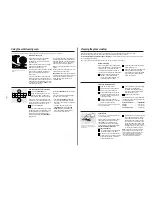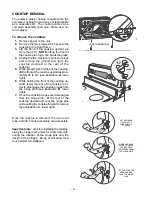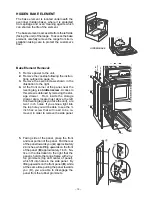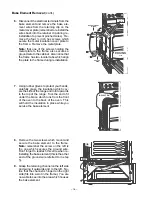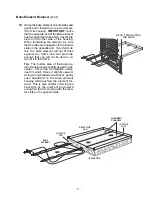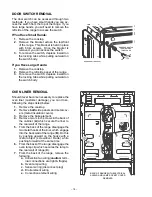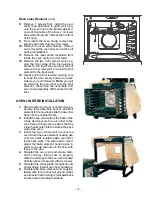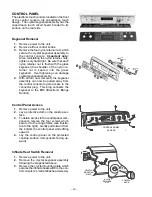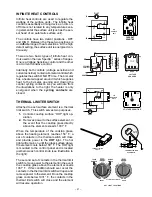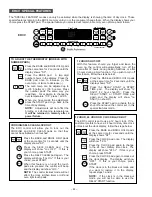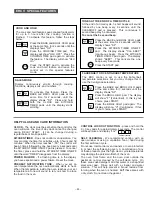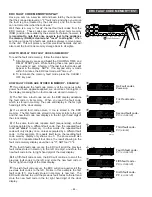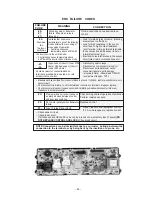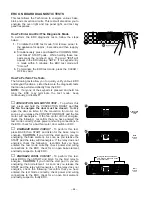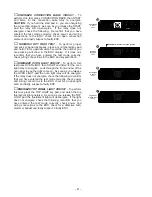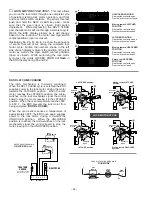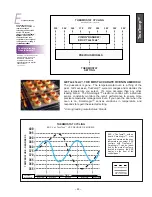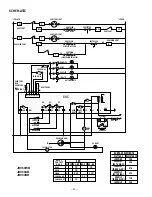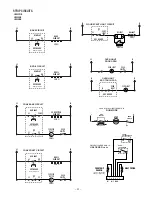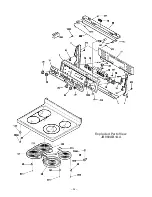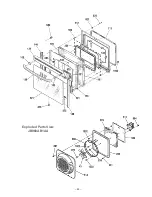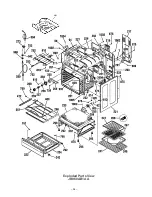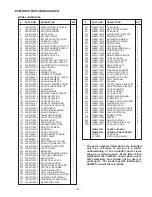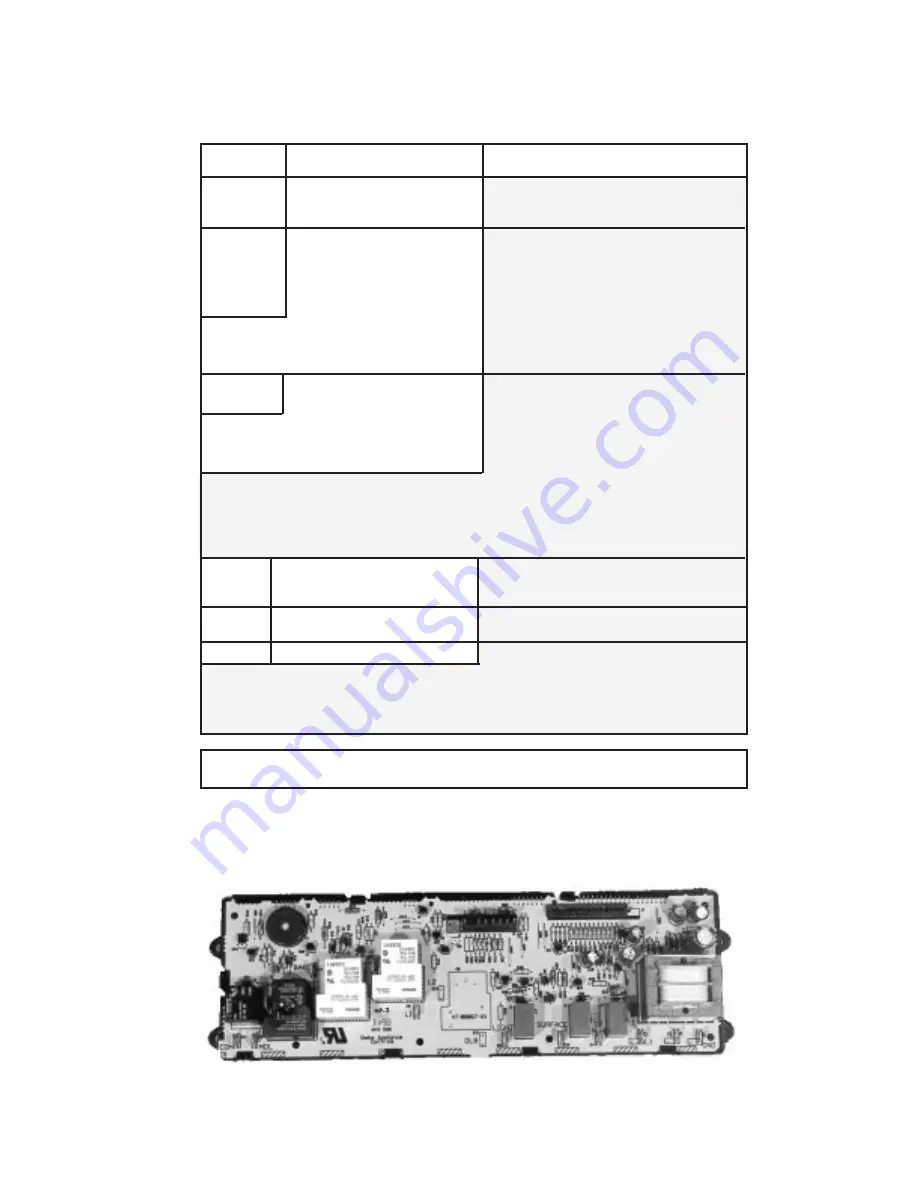
– 25 –
ERC FAILURE CODES
• Measure each sensor lead from connector block to ground. If shorted, look for pinched or cut wire in
sensor circuit.
• Check connector terminals - Look for deformed or corrosion on terminals. Repair or replace.
• Check connector at sensor (remove sensor and carefully pull leads with connector into oven)
• If all above is ok replace control.
FAILURE
MEANING
CORRECTION
CODE
-F0-
-F1-
-F7-
Stuck key pad or transistor
failure. May mean relay is
turned on.
If code cannot be cancelled, replace
control.
-F2-
Also see
fan
thermal
switches
Indicates that oven is over
temperature in one of the following
modes within either a cooking or
clean mode of operation.
• Control senses oven
temperature above 630
°
F with
• Look for welded relay contacts. (Heating
elements on in off mode).
• Look for high resistance in the sensor
circuit due to high contact resistance
(poor terminal crimp, deformed terminals,
loose connection inside sensor tube) or
intermittent solder joint.
• Electrical noise interference in the sensor
circuit (Ham radio, cordless phone etc.).
the door circuit in the unlock mode.
• Control senses oven temperature above
930
°
F with the door in the door locked mode.
-F3-
-F4-
Open sensor (circuit) (over 2700
ohms) Shorted sensor (circuit)
(under 950 ohms)
Could be result of contamination on
terminals, pinched harness lead, or cold
solder joint on control.
• Disconnect power to range.
• Disconnect sensor connector at control.
Measure sensor resistance at control
connector (take care not to damage
terminals in block) - Should read 1100
Ω
at
room ambient (approx. 72
°
F).
-FC-
Check wiring and test operation of switches.
Perform resistance check.
Problem with door lock circuit such
as pinched wires between control
and door lock switches.
-FF-
Door motor safety switch transistor
failure
Replace control.
-F5-
Loss of relay drive circuit
• Press Clear/Off and reprogram control.
If -F5- code reappears, replace control.
• Check sensor circuit.
• Check lock circuit.
If all above check OK the F5 code can be a result of a momentary loss of power (DO
NOT REPLACE CONTROL AND LOCK.) Check lock circuit.
NOTE:Connections can be intermittent due to a corrosive buildup between the
connection to the terminals, or by being bent by the insertion of a probe, etc.


